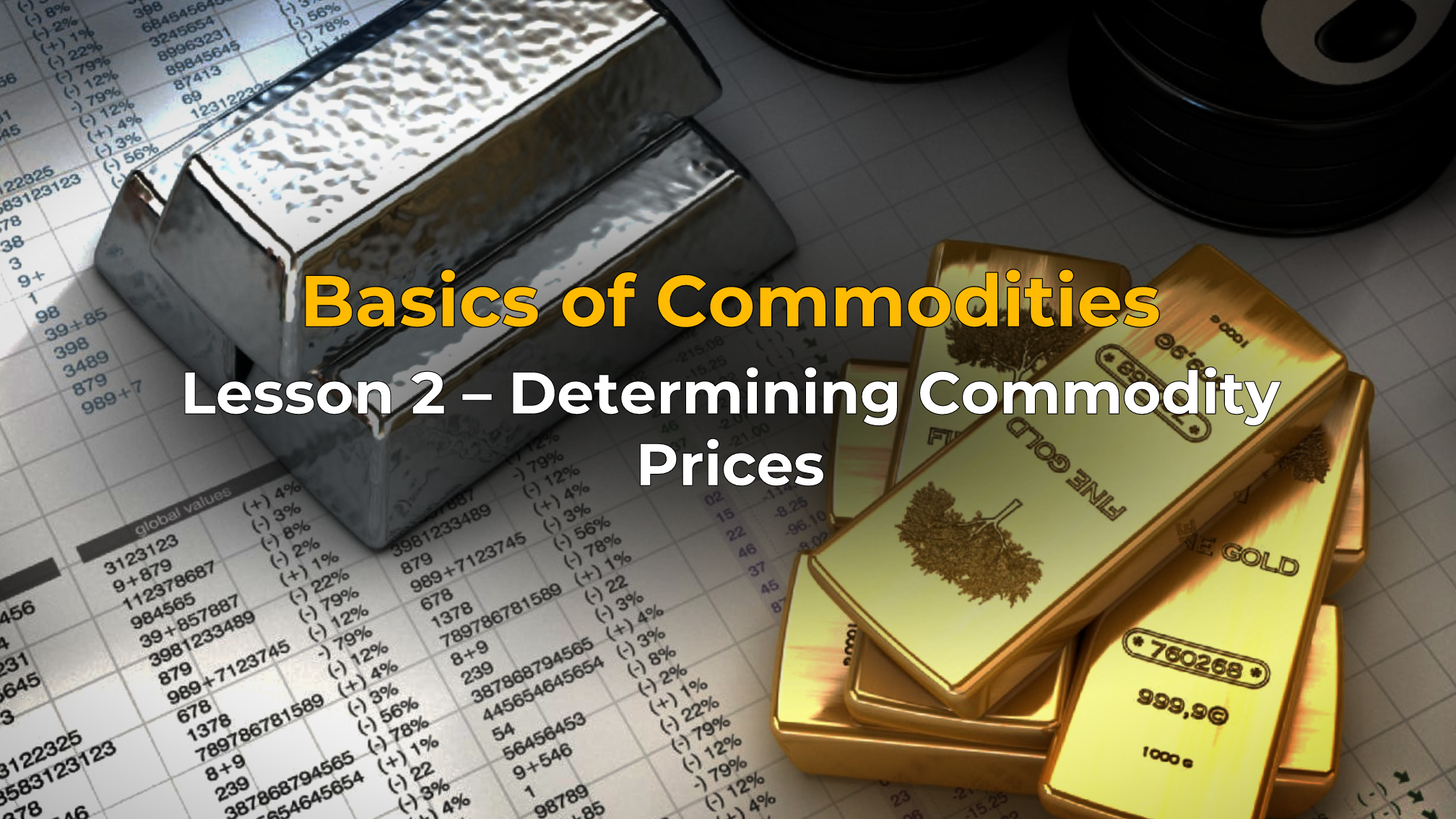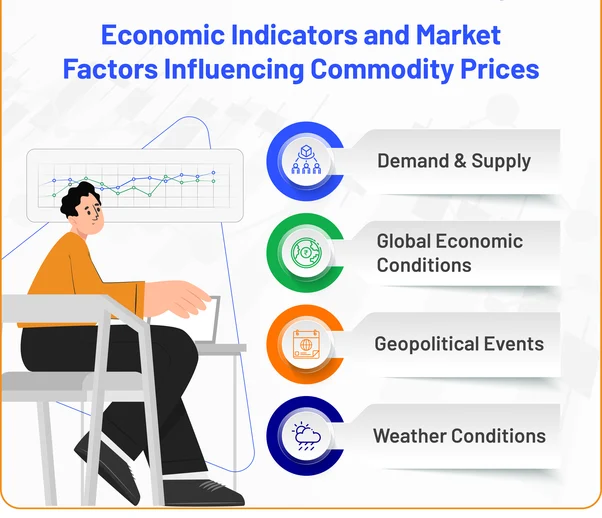
Basics of Commodities Trading: Lesson 2 – Determining Commodity Prices
23 December 2023
65 views
Supply and Demand Dynamics
- Supply Factors:
- Production Levels: Changes in production due to technological advancements, labor strikes, or natural disasters can affect supply.
- Geopolitical Events: Political instability or conflicts in commodity-producing regions can disrupt supply.
- Demand Factors:
- Economic Growth: Increased industrial activity and consumer spending boost demand for commodities.
- Seasonal Trends: Certain commodities have seasonal demand patterns, like agricultural products.
Key Influences on Commodity Prices
- Market Sentiment: Investor perceptions and market trends can influence commodity prices.
- Example: Speculation about future oil prices can drive current oil prices up or down.
- Economic Indicators: Data such as GDP growth, inflation rates, and employment figures impact commodity prices.
- Example: Higher inflation can increase the price of gold as a hedge against rising costs.
- Weather Conditions: For agricultural commodities, weather plays a critical role in determining supply.
- Example: Droughts can reduce crop yields and drive up prices for grains.
- Global Events: Natural disasters, wars, and trade policies can significantly impact commodity markets.
- Example: Hurricanes affecting oil rigs in the Gulf of Mexico can disrupt oil supply and increase prices.

How to Analyze Commodity Prices
- Fundamental Analysis: Examines supply and demand factors, economic indicators, and global events to predict price movements.
- Technical Analysis: Uses historical price data and chart patterns to forecast future price trends.
- Example: Identifying support and resistance levels on a price chart.
- Market Reports: Regular reports from organizations like the U.S. Energy Information Administration (EIA) and the World Bank provide insights into commodity markets.
Example: Oil Prices
- Supply Impact: If OPEC decides to cut production, oil prices may rise due to reduced supply.
- Demand Impact: Increased global economic activity can lead to higher oil consumption and push prices up.
- Global Event Impact: A geopolitical conflict in a major oil-producing region can cause a spike in oil prices.
Conclusion
Understanding the factors that influence commodity prices is crucial for making informed investment decisions. In the next lesson, we will cover strategies for trading and investing in commodities effectively.




